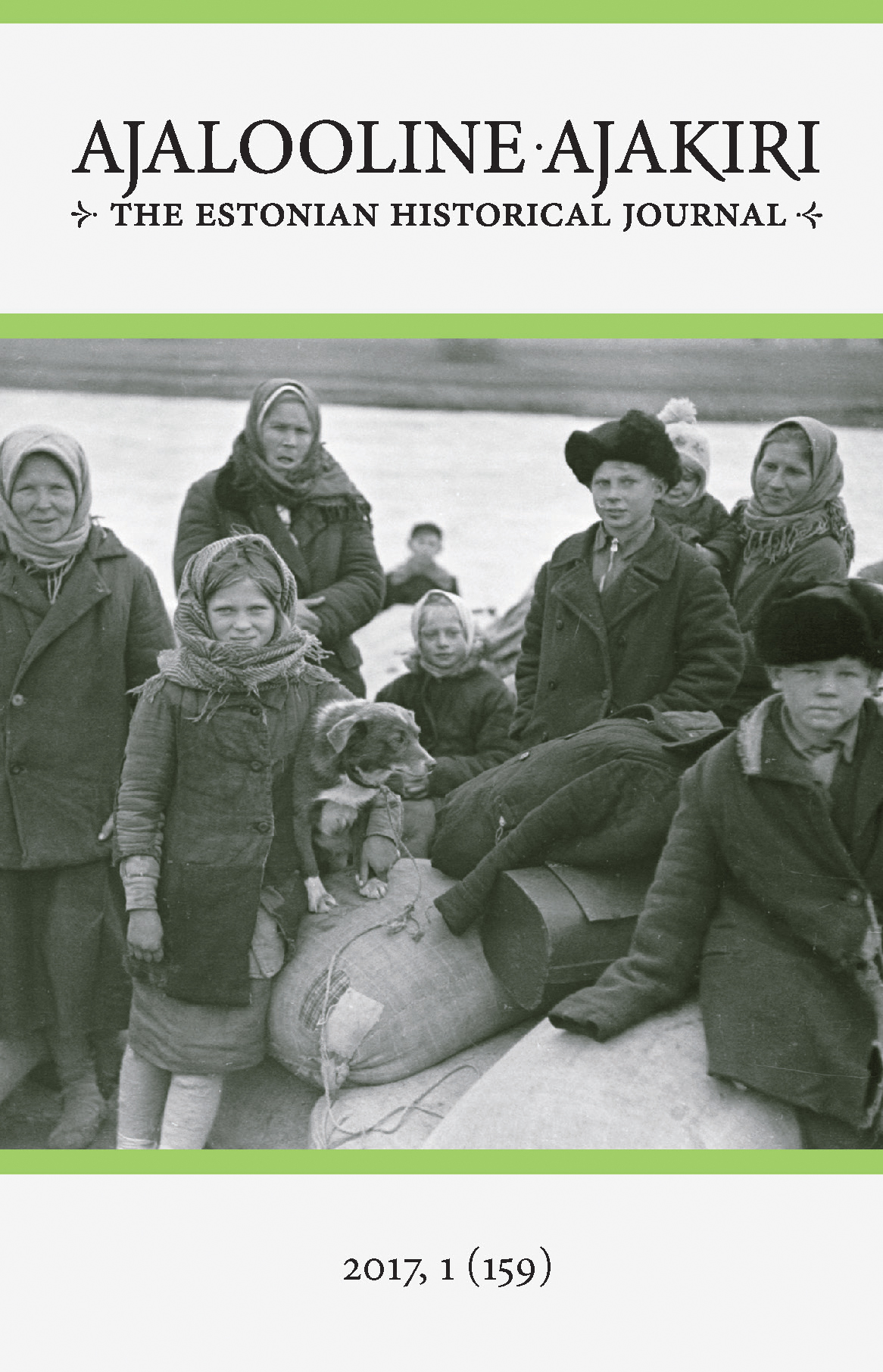Tallinna ja Harju-Viru rüütelkonna alistumine Rootsile 1561: vormid ja põhjused [Abstract: The capitulation of the town of Tallinn and the Harju-Viru knighthood to Sweden in 1561: forms and causes]
DOI:
https://doi.org/10.12697/AA.2017.1.02Keywords:
Estonian history, Swedish great power era, early modern period, crown and province, ceremonies, history of TallinnAbstract
The subjugation of Northern Estonia to Swedish rule in 1561 is described in all general presentations of history, yet by and large, the course of events has not been traced in newer research. This period of history is very remarkable in three aspects. First of all, it was important for Sweden’s political history because over the course of the subsequent hundred years, Sweden became a major power in the Baltic Sea region, in reference to which the expression dominium maris Baltici is used. Secondly, the events of 1561–62 were of local importance because they led to the demise of the State of the Livonian Order in Livonia, which also meant the end of the Middle Ages in that region. The third viewpoint concerning the effect of these events to constitutional law is perhaps even more important. They started the transformation of previously unitary Sweden into a European conglomerate state where in addition to the motherland, there were other distinctive parts with different rights, so called provinces. Only a part of this chain of events will be examined in this study, namely the visit of the Swedish envoys Klas Kristersson Horn, Hans Larsson Björnram and Herman Bruser to Tallinn from March to June of 1561 and the events following this visit after the coronation of the king in Stockholm towards the end of the summer. There is abundant source material related to the deliberations (correspondence, presentations, documents verifying privileges, descriptions of oral conversations) and part of it has been published, but there are many loose ends in this material, first and foremost in regard to questions related to constitutional issues. A completely new picture of the history of the birth of Sweden as a great power emerges as a result of the careful reading of the sources. Unlike later developments, to a great extent the initiative came from Tallinners themselves. Their vision was affected both by the fear of Russia and by the wish to use the opportunities offered by trade with the east. Complete concord prevailed in these matters between the Tallinners and Sweden’s young king Erik XIV. The Harju-Viru knighthood and the nobility of Järvamaa followed the example of Tallinn’s senior magistrates and town council. The vote with acclamation that took place in Tallinn, where the participants chose “with hand and mouth” the king of Sweden as their ruler, was of central importance. This was followed by detailed consultations, where Horn, Björnram and Bruser in accordance with their authorisation agreed to the existing privileges of the corporations. Two separate “acts of recognition” (Huldigung) took place in Tallinn on 4 and 6 June 1951, the content of which was typical in the case of the declaration of the sovereign as ruler. The central elements of these ceremonies were the oath of allegiance and the affirmation of the ruler, ecclesiastical ceremonies and various kinds of expressions of joy. After this, a delegation from the knighthood and the city travelled to Sweden, but they were late (perhaps for diplomatic reasons) for the king’s coronation celebrations held in Uppsala in June of 1561. In this way they did not have to take the oath of allegiance the same way as the Swedes. The final phase of the events took place in audiences with Erik XIV in Stockholm as well as its surrounding area. The promises and the written oaths taken in Tallinn were reviewed on the basis of Sweden’s legal expertise and even though the Swedes were not always satisfied with them, the king affirmed them all the same. He was emphatically benevolent and even approved the privileges presented by the delegations without reading them, asking only whether there was not anything in them contrary to natural law. Thus the privileges of both the knighthood and the city were approved in Norrköping on 2 August 1561. The Riksradet (Council of the Realm) did not participate in making the final decisions and the king also did not request any recommendation from the Riksdag (Sweden’s parliament). Instead, he relied on the permit that Riksdag had already granted to Gustav Vasa in the summer of 1560 “to set foot in Livonia”. The reason as seen from Sweden for incorporating Tallinn and its surrounding region was undoubtedly primarily mercantile. Several features of the policy of Erik XIV, and the selection of envoys (Horn and Björnram) from among persons who knew Russian trade the best, are indicative of this. Yet other reasons also had their effect, for instance state security and the ruler’s ambition and vanity. On the whole, Sweden’s path to becoming a great power can be explained on the basis of the complexity theory and especially the path dependence featured in this theory, where decision-making is limited to the path that has previously been selected. The distinctive feature of the events that took place in Tallinn was the fact that they had the strong support of the city’s inhabitants and that very little military force was used, while on the other hand money was spent liberally to pay for both bribes and awards.Downloads
Download data is not yet available.
Downloads
Published
2017-05-03
Issue
Section
Artiklid / Articles

